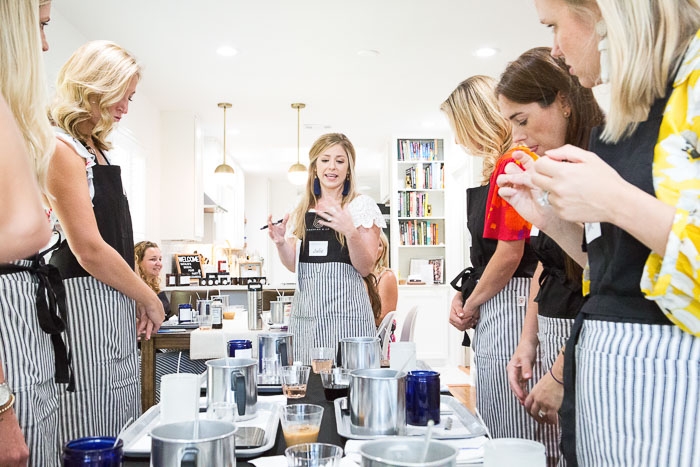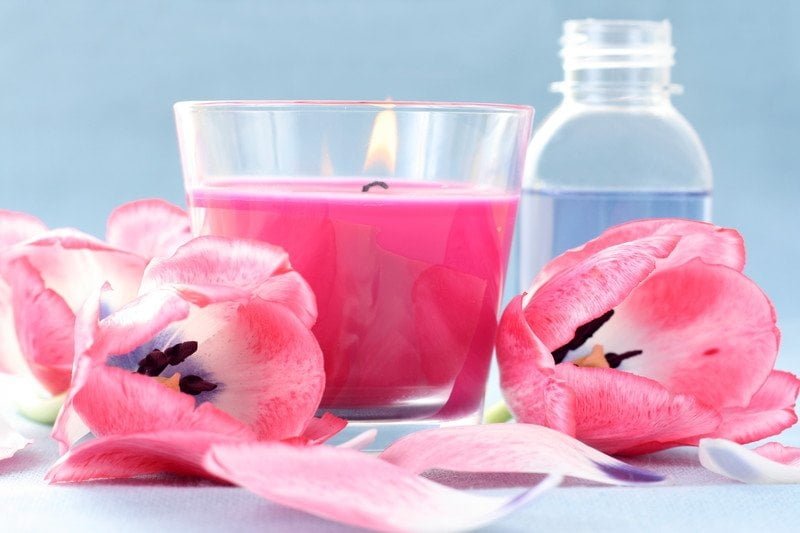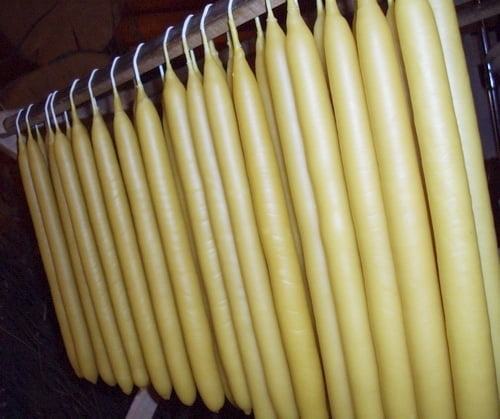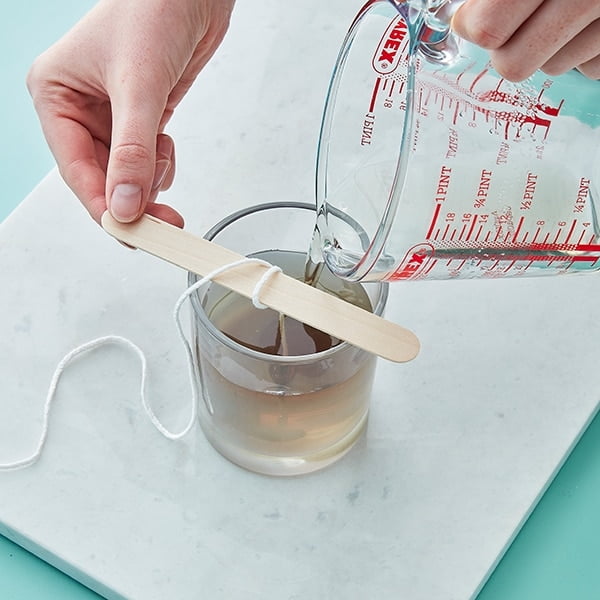Are you interested in learning the art of paraffin candle making for beginners? Whether you’re looking to add a personal touch to your home décor or create unique gifts for loved ones, this beginner’s guide will equip you with all the essential knowledge and skills to get started. From understanding the basics of paraffin wax to exploring different techniques for decorating candles, this article will provide you with a comprehensive introduction to the world of paraffin candle making.
Paraffin candle making is a popular hobby and craft that allows individuals to showcase their creativity while also enjoying the therapeutic process of crafting candles. In this guide, we will cover everything from the essential tools and materials needed for paraffin candle making, to step-by-step instructions on creating your first paraffin candle.
By the end of this article, you’ll have a solid foundation in paraffin candle making and be well-prepared to embark on your own creative candle-making journey.
Whether you’re a complete novice or have dabbled in other forms of crafting, this guide is designed to cater to beginners who are eager to delve into the world of paraffin candle making. With safety precautions, troubleshooting tips, and advice on choosing fragrances, this article aims to provide you with all the necessary information for a successful start in paraffin candle making. So let’s get ready to embrace the art of paraffin candle making.
Understanding the Basics of Paraffin Wax
Composition and Properties of Paraffin Wax
Paraffin wax is a type of wax derived from petroleum, known for its clean-burning and versatile nature. It consists primarily of straight-chain hydrocarbons, which give it a high melting point, making it an ideal choice for candle making. Paraffin wax is also renowned for its ability to hold color and fragrance well, creating beautifully vibrant and aromatic candles.
Types of Paraffin Wax
There are different grades of paraffin wax available in the market, each with varying melting points and characteristics. Fully refined paraffin wax is often used for candles due to its purity and ability to produce consistent results. Semi-refined paraffin wax may contain some impurities but can still be suitable for candle making. It’s essential to understand the differences between these types to choose the most suitable one for your projects.
Sustainability and Safety Considerations
While paraffin wax is a popular choice for candle making, some concerns have been raised about its sustainability and health impacts. It’s important for beginners in paraffin candle making to research and understand the potential environmental and health effects associated with using paraffin wax. Additionally, proper ventilation and safety measures should be observed when working with any type of wax to ensure a safe and enjoyable candle making experience.
Essential Tools and Materials for Paraffin Candle Making
When venturing into the world of paraffin candle making, it is important to have the right tools and materials to ensure a successful and enjoyable experience. Here are some essential items you will need:
Paraffin Wax
The most crucial component in paraffin candle making is, of course, the paraffin wax itself. Make sure to choose a high-quality, food-grade paraffin wax for best results.
Double Boiler or Wax Melter
A double boiler is necessary for melting the paraffin wax safely without direct heat. If you don’t have a double boiler, a dedicated wax melter can also be used.
Thermometer
In order to achieve the perfect pouring temperature for your paraffin wax, it is essential to have a thermometer specifically designed for candle making.
Candle Wicks
Selecting the right wick size and type is important to ensure proper burning of your paraffin candles. Pre-tabbed wicks are recommended for beginners as they come with a metal base that makes them easy to center in the candle container.
Fragrance Oils (Optional)
If you want to add scents to your candles, make sure to use fragrance oils specifically designed for candle making. It’s important to follow recommended usage rates when adding fragrance oils to your paraffin wax.
Dye Blocks (Optional)
For colored candles, dye blocks specifically formulated for paraffin wax should be used. These blocks are easy to measure and melt into the wax during the candle making process.
Having these essential tools and materials on hand will set you up for success when starting your journey into paraffin candle making for beginners.
Step-by-Step Guide to Making Your First Paraffin Candle
Are you ready to start creating your own paraffin candles? Follow this step-by-step guide to make your first candle at home.
Materials Needed
- Paraffin wax
- Candle wick
- Candle dye or color block
- Fragrance oil (optional)
- Candle mold or container
- Double boiler or melting pitcher
- Thermometer
- Stirring utensil
- Wicking needle or chopsticks
Step 1: Prepare Your Work Area
Before you start, make sure your work area is clean and organized. Lay out all the materials and tools you will need for the candle making process. This will help ensure a smooth and efficient creation of your paraffin candle.
Step 2: Melt the Paraffin Wax
Using a double boiler or melting pitcher, melt the paraffin wax over low to medium heat. Stir occasionally and monitor the temperature with a thermometer. Once the wax reaches around 170-180°F, it’s ready for the next step. Be cautious, as hot wax can cause burns.
Step 3: Add Color and Fragrance (Optional)
If desired, add candle dye or color block to achieve your preferred color. For a scented candle, mix in fragrance oil at this stage. Stir the melted wax thoroughly to distribute the color and fragrance evenly.
Step 4: Set Up Your Container and Wick
Place the wick in the center of your chosen container or mold. You can use a wicking needle or simply secure it in place using chopsticks across the top of your container. Make sure it remains centered throughout the pouring process.
Step 5: Pouring the Wax
Carefully pour the melted paraffin wax into your prepared container or mold. Leave a small amount of space at the top to allow for any additional adjustments needed later.
Now that you’ve gone through these steps, you’re on your way to creating your first paraffin candle. With practice and experimentation, you can continue developing your skills and exploring different techniques in paraffin candle making for beginners.
Tips for Choosing and Using Fragrances in Paraffin Candle Making
When it comes to paraffin candle making for beginners, choosing the right fragrance is an essential part of the process. The scent of a candle can greatly impact the overall experience for the user, so it’s important to select fragrances that will complement the candles you are creating. Here are some tips for choosing and using fragrances in paraffin candle making:
- Choose high-quality fragrances: When selecting fragrances for your paraffin candles, opt for high-quality scents that are specifically designed for candle making. These fragrances are formulated to work well with the wax and will provide a strong, lasting scent when the candle is burned.
- Consider the end result: Think about the mood or atmosphere you want to create with your candle. Do you want a calming, relaxing scent for a bedroom candle? Or perhaps a fresh, energizing fragrance for a kitchen candle? The choice of fragrance should align with the purpose of the candle.
- Experiment with different combinations: Don’t be afraid to mix and match different fragrances to create your own unique blends. You can also experiment with varying the strength of the fragrance to achieve your desired scent intensity.
In addition to choosing fragrances, it’s important to understand how to properly incorporate them into your paraffin candles. Here are some tips for using fragrances in your candle making process:
- Follow manufacturer guidelines: Be sure to carefully follow the recommended usage rates provided by the fragrance manufacturer. Using too much or too little fragrance can affect both the scent throw and burn performance of your candles.
- Add fragrance at the right temperature: Most manufacturers recommend adding fragrance oil when the melted wax has cooled slightly but is still liquid. Adding fragrance at too high of a temperature can cause it to evaporate quickly, resulting in a weaker scent.
- Mix thoroughly: After adding the fragrance oil, make sure to stir it into the melted wax thoroughly and continuously for several minutes. This ensures that the fragrance is evenly distributed throughout the wax, resulting in an even scent throw when the candle is burned.
By carefully considering and incorporating these tips when choosing and using fragrances in paraffin candle making, beginners can enhance their candle-making skills and ensure that their finished products boast beautifully scented aromas that will delight all who use them.
Exploring Different Techniques for Decorating Paraffin Candles
Decorating paraffin candles is an exciting part of the candle making process that allows beginners to unleash their creativity. There are various techniques that can be used to add unique and beautiful designs to your homemade candles. One popular method is using colored dyes to create vibrant and eye-catching patterns.
Another technique involves incorporating dried flowers, herbs, or even glitter into the surface of the candle for a decorative touch. Additionally, you can experiment with different molds and shapes to create visually stunning candles.
When exploring different decorating techniques for paraffin candles, it’s important to consider the overall aesthetic you want to achieve. Whether you prefer a rustic, natural look or a more modern and sleek design, there are endless possibilities for customizing your candles. Layering different colors of wax, using stencils for precise designs, or even incorporating beads or crystals are just a few examples of how you can elevate the visual appeal of your candles.
As you start experimenting with decorating techniques, don’t be afraid to get creative and think outside the box. Remember that practice makes perfect, so don’t be discouraged if your first attempts don’t turn out exactly as planned. Embracing trial and error is all part of the fun when it comes to discovering your own unique decorating style in paraffin candle making for beginners.
| Decorating Techniques | Description |
|---|---|
| Colored Dyes | Create vibrant patterns with colored dyes added to melted wax. |
| Incorporating Additives | Add dried flowers, herbs, or glitter for decorative elements on the candle surface. |
| Molds and Shapes | Experiment with different molds and shapes for visually appealing candles. |
Troubleshooting Common Issues in Paraffin Candle Making
Paraffin candle making for beginners can be an enjoyable and rewarding hobby, but it’s not without its challenges. As you embark on your candle making journey, you may encounter some common issues that can affect the quality and appearance of your candles. However, with a little knowledge and the right techniques, many of these issues can be easily resolved.
One common issue that beginners often face is air bubbles forming in their paraffin candles. These unsightly bubbles can detract from the overall aesthetic of the candle, but they can be prevented with the proper pouring technique. Ensuring that the temperature of the wax is just right before pouring and gently tapping the mold to release any trapped air bubbles are simple yet effective solutions to this problem.
Another frequent problem is “wet spots,” which are areas on the surface of the candle where the wax has pulled away from the container, creating an unattractive blemish. This issue can arise when there is a significant difference in temperature between the wax and the container. To avoid wet spots, it’s important to warm the container before pouring in the wax and to pour at a slightly cooler temperature.
In addition to air bubbles and wet spots, fragrance retention can also pose a challenge for those new to paraffin candle making. It’s important to choose high-quality fragrances specifically designed for use in candles and to follow recommended usage rates. Overly fragranced candles can cause pooling or smoking, while under-fragranced candles may not produce a strong enough scent throw.
| Common Issue | Solution |
|---|---|
| Air Bubbles | Ensure proper pouring technique and tap mold to release trapped air |
| Wet Spots | Warm container before pouring in wax and pour at a slightly cooler temperature |
| Fragrance Retention | Choose high-quality fragrances designed for use in candles and follow recommended usage rates |
Safety Precautions and Best Practices for Paraffin Candle Making
When it comes to paraffin candle making for beginners, safety should be the top priority. Working with hot wax and open flames can present potential hazards, so it’s important to take necessary precautions to ensure a safe and enjoyable candle-making experience.
One of the most crucial safety measures in paraffin candle making is to always work in a well-ventilated area. This helps to reduce the risk of inhaling harmful fumes from the melting wax. Additionally, it’s important to have a fire extinguisher within reach in case of any accidents involving the open flame.
In terms of best practices, it’s recommended to use a double boiler or a dedicated wax melter specifically designed for candle making. This will help prevent the wax from reaching high temperatures that could pose a safety hazard. Furthermore, using appropriate heat-resistant containers and utensils when working with hot wax is essential for preventing burns or accidents.
Another important best practice is to keep flammable materials away from the work area. This includes fabrics, paper, and anything else that could easily catch fire from an open flame or hot wax. By following these safety precautions and best practices, beginners can enjoy their introduction to paraffin candle making without compromising their well-being.
Conclusion
In conclusion, paraffin candle making for beginners is a rewarding and enjoyable hobby that anyone can learn and master with dedication and practice. With the right understanding of the basics of paraffin wax, essential tools and materials, step-by-step guides, tips for choosing fragrances, techniques for decorating, and troubleshooting common issues, beginners can confidently create beautiful and aromatic candles at home.
As you venture into the world of paraffin candle making, remember to start with simple projects and gradually explore more advanced techniques. Don’t be afraid to experiment with different fragrances and decorative methods to make your candles unique. With time and experience, you will develop your own personal style and signature creations.
Lastly, always prioritize safety when making paraffin candles. Familiarize yourself with safety precautions and best practices to protect yourself from potential risks. By embracing the art of paraffin candle making for beginners with creativity, care, and dedication, you’ll soon find yourself immersed in a fulfilling hobby that brings warmth and light into your life.
Frequently Asked Questions
How Do You Make Paraffin Wax Candles at Home?
Making paraffin wax candles at home involves melting the paraffin wax in a double boiler, adding color and fragrance oils, then pouring the wax into molds with pre-tabbed wicks. Once cooled, the candles can be removed from the molds and trimmed.
What Are the Disadvantages of Paraffin Candles?
The disadvantages of paraffin candles include their release of potentially harmful chemicals when burned, such as benzene and toluene. Additionally, paraffin is derived from petroleum, making it non-renewable and environmentally unfriendly.
What Temperature Should Paraffin Wax Be for Candle Making?
The ideal temperature for melting paraffin wax for candle making is between 160-170 degrees Fahrenheit. This ensures that the wax is fully melted but doesn’t become too hot, which could affect the quality of the candle once it solidifies.

Welcome to my candle making blog! In this blog, I will be sharing my tips and tricks for making candles. I will also be sharing some of my favorite recipes.





